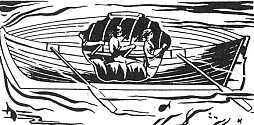|
A Radio Talk by Charles F. Kettering The submarine came about by a process of evolution. It is the culmination of over 500 years of study and research on the part of many men in many countries. We know that even before the time of Columbus, an unknown inventor built a submarine boat to smuggle men across a river, and in 1586 an Italian, Ganibelli, destroyed a bridge near Antwerp using a nearly submerged boat loaded with gun powder.  About the time the Pilgrims landed on Plymouth Rock, Van Drebbel, a Dutchman, invented the first under water boat to carry a crew. Symons, an Englishman, over a hundred years later contributed the idea of. using leather water bottles as adjustable ballast tanks, And David Bushnell of George Washington's day equipped his one man submarine, "The Turtle," with a screw propeller. Robert Fulton in 1805 demonstrated a torpedo-carrying submarine blowing up a 200-ton brig thereby showing the military possibilities of the device. |








